Snow Myths And Odd Facts
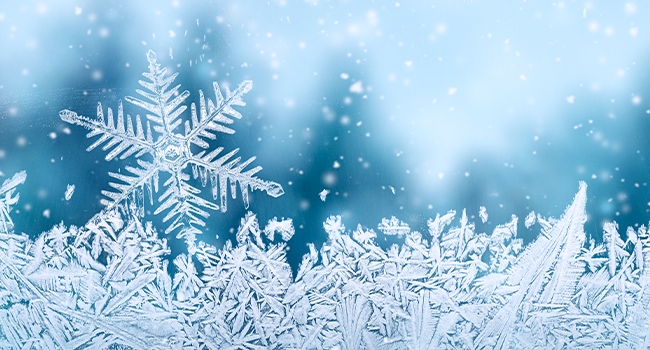
Ever wonder if it’s true that no two snowflakes are alike? How about if large snowflakes mean the storm won’t last long? Learn the truth about popular myths and bizarre facts that you’ll want to tell a friend about. After reading this, you may find yourself building an igloo!
Snow Myths Explained
Contrary to popular belief, two snowflakes can be alike!
In 1988 a scientist at the National Center for Atmosphere Research found two identical crystals during a storm in Wisconsin. However these snowflakes were only a few molecules wide.
The myth still holds up when it comes to larger snowflakes—ones that you would see drifting in the air. No two complex snowflakes are alike.
Do large snowflakes mean it’s only a passing flurry?
Possibly, but not necessarily. It means that the temperature in the upper atmosphere is warmer. If temperatures continue to rise, it could mean that the snow will stop forming.
A classic bit of weather lore states “Big Snow, Little Snow. Little Snow, Big Snow.” Farmers’ Almanac Editor Peter Geiger explains: “The smaller the snowflake, the colder the conditions and the more powerful the system—which leads to a large amount of accumulations. So small snowflakes mean greater accumulations. Big snowflakes have lots of moisture and either melt or cling together upon contact and do not build up during the storm. So if you see big wet snowflakes there should be less snow accumulating from this storm.”
Snow may fall when temperatures are above the freezing.
Snow forms in the clouds where temperatures are freezing. However it can theoretically fall when the ground surface temperatures are in the mid-40s, sometimes even higher. (See below!)
Snow is translucent—not white.
While we may dream of a White Christmas, this isn’t technically accurate. It reflects up to 90 percent of the light, with no color absorbed, therefore it is the light reflecting off the fallen snow that makes it appear to be white. Dust, pollution, and algae may make it seem to be blue, black, or even pink.
A yodel won’t cause an avalanche.
While several things can trigger an avalanche, noise isn’t one of them. Weight, such as a sudden flood of snow, sudden high wind speeds, or even the agitable footsteps of a skier can prompt a sudden cascade, but loud noises, such as yodeling, won’t have much effect and are merely fictional plot devices in movies.
Fun Facts
There are 35 types of snowflakes.
The air temperature determines a snowflake’s shape. SmithsonianMagazine.com provides a link to a great infographic that shows all the kinds here.
Dust or pollen is required.
Snowflakes form around tiny bits of dust or pollen in the air. According to the National Snow and Ice Data Center, snow is a mineral. It is a naturally occurring solid, formed inorganically, with a definite chemical composition.
Snowflakes grow on their way down.
On their decent to earth through humid air, more water vapor freezes onto the surface of the crystal, enlarging their hexagonal pattern.
Snowflakes travel up to 9 miles per hour.
Depending on the environmental conditions, snowflakes can fall to Earth from 1-9 mph. It takes one snowflake roughly an hour to reach the ground.
Does it affect outdoor sounds?
Freshly fallen snow absorbs sounds waves, making everything sound hushed after a flurry. Once it melts and refreezes however, the ice can make the sound waves travel even further.
More Bizarre Facts
It can be 100 degrees warmer inside an igloo!
Snow is a great insulator. It’s made of 90-95 percent trapped air which prevents the transfer of heat. Warmed entirely by body heat, an igloo can be 100 degrees warmer than the outside environment.This is why animals will dig deep holes the snow for hibernation. Here are smart ways to lower your heating bill.
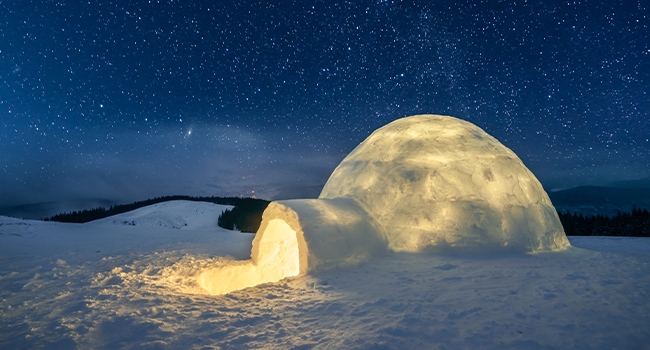
Death Valley Sightings
Death Valley has received several dustings. The most recent was in 2008.
Criminalized in New York
In a tongue-to-cheek attempt to curb the onslaught in one of America’s snowiest cities, the city of Syracuse, NY, passed a decree in 1992 to outlaw snow before Christmas Eve. Unfortunately, Mother Nature doesn’t adhere to our laws, and it began coming down on December 24.
A Clinical Fear
It’s called “chionophobia” from the Greek word for snow (chioni).
Hundreds of Names
It has been said that the Inuits have roughly 50 words for snow, however that pales in the comparison to the Scots, who have a recorded 421 terms for the white stuff, including ‘skovin’ (a large snowflake), ‘spitters’ (small drops of driving snow), and ‘flindrikin’ (a slight shower).
The Golden Snow Globe Award
is a friendly national competition which awards the snowiest city, with a population of over 1,000,000. Buffalo, New York took home the trophy for the snowiest 2021-2022 season (97.4 inches) and is also on track to secure next year’s title as well.
Word Records
World’s Largest Snowflake
The largest snowflake on record measured 15 inches in diameter and 8 inches thick and fell in Fort Keogh, Montana, in 1887. Local ranchers described the flakes as “larger than milk pans.”
Greatest Depth Ever Recorded
Tamarack, California holds the U.S. record for the greatest snow depth ever recorded. A total of 452 inches, or 37.5 feet, was recorded on March 11, 1911.
World-record Snowfall In 60 Minutes
Lake effect snow events help command the record books when it comes to extreme, but brief snow fall records. Copenhagen, NY, holds the record for most snowfall in one hour, recording 12 inches on December 2, 1966.
Most Snowfall 24-Hours
Silver Lake, Colorado sets the record for most snowfall in a 24-hour period. On April 14-15 in 1921, a six-foot tall man would have been buried by snow if he stood outside, recording a total of 75.8 inches of snow in one day.
Most Snow Angels In One Location
Bismark, North Dakota, holds the record for the most snow angels in one place simultaneously. 9,000 people took to the snow on the state Capital grounds, waving their arms to land the world record on February 17, 2007.
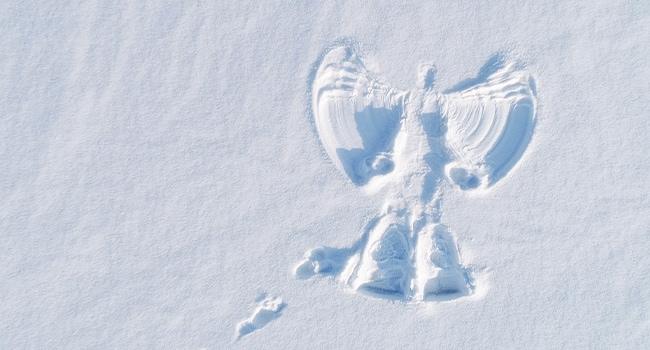
Largest Snowball Fight
On January 12, 2013, 5,834 snow fighters exchanged “snow fire” in Seattle, Washington to create the largest snowball fight in the world.
Largest Igloo Ever Built
In Zermatt, Switzerland, eighteen crew members from the Iglu-Dorf (igloo-dorf) building crew built the largest igloo ever, measuring an impressive more than 34′ tall and 42′ in diameter. It took three weeks to construct, using approximately 1,400 blocks of snow.
The Fake Stuff
How is man-made snow made? Often the man-made option is needed to keep the slopes open. The process for making man-made snow mimics the natural formation of snow, with small droplets of water freezing into ice crystals.
Most artificial snow is made using a Snow Cannon or Lance. The snowmaker uses high pressure water to blow tiny droplets into the air, which freezes as it falls to the ground.
What do they use for the fake stuff in movies? Most artificial snow allows for a quiet snowfall, without the cold, wet, and meltable natural counterpart. It is often concocted from substances such as foamite (a substance used in fire extinguishers), soap flakes, water, and sugar.
Over the years filmmakers have created it with marble dust, salt, and flour, and nowadays a much more environmentally friendly, paper-based cellulose product, is used.
Join The Discussion
What fact, myth, or bit of history did you find most interesting?
Do you know something not mentioned here?
Have you ever stayed overnight in an igloo before?
Let us know in the comments below!

Natalie LaVolpe
Natalie LaVolpe is a freelance writer and former special education teacher. She is dedicated to healthy living through body and mind. She currently resides on Long Island, New York, with her husband, children, and dog.


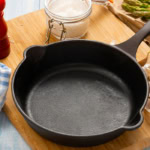

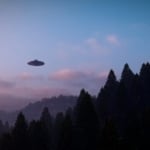

I’m in Huntington West Virginia and the last good snow we had was a blizzard twice, the big one in 1993 the smaller 1 in 1997. Got a bit excited last week we heard thunder while it was snowing like during the blizzards but news said the temps were a little to high in the beginning or we would’ve had a blizzard. We rarely get snow. 2 yrs ago we got 3 horrible ice storms back to back but it’s like we have a bubble around us in winter usually it’s 60s ahalf the winter. Christmas day it was 60 degrees
Very interesting information! I was wondering though, in your photo of the igloo, there was light shining out of it. My question is, can you build a fire inside an igloo? If so, how do you keep it from melting the snow? Thanks, Janice
Great questions! Many will have small lanterns in their igloos which can provide that light and add a little warmth to the body heat already helping warm an igloo. You can indeed have a small fire in an igloo! The hot air and cold air work together to slightly warm the inside of the igloo enough that it will melt just a small amount. They cold from the outside will then cause this to refreeze with a smooth crust, reducing the surface area allowing it to be less likely to melt. Over time equilibrium sets in and you have a comfortably warm environment. Please note, you do need very small holes in an igloo for ventilation to prevent buildup of Carbon monoxide and carbon dioxide.
Enjoyed this article very much. Didn’t know there was so much to know about snow!
Thank you! We are happy to have you as part of our community!
I grew up in the southeast and our infrequent snowfalls were accompanied by hopes that it would stay on the ground for three days. Folklore held it would have another show if it did!
Hi, thanks for the interesting article!
Hi Mark! Glad to hear you appreciate it. Thanks for leaving a comment. You are a valued member of our online community!